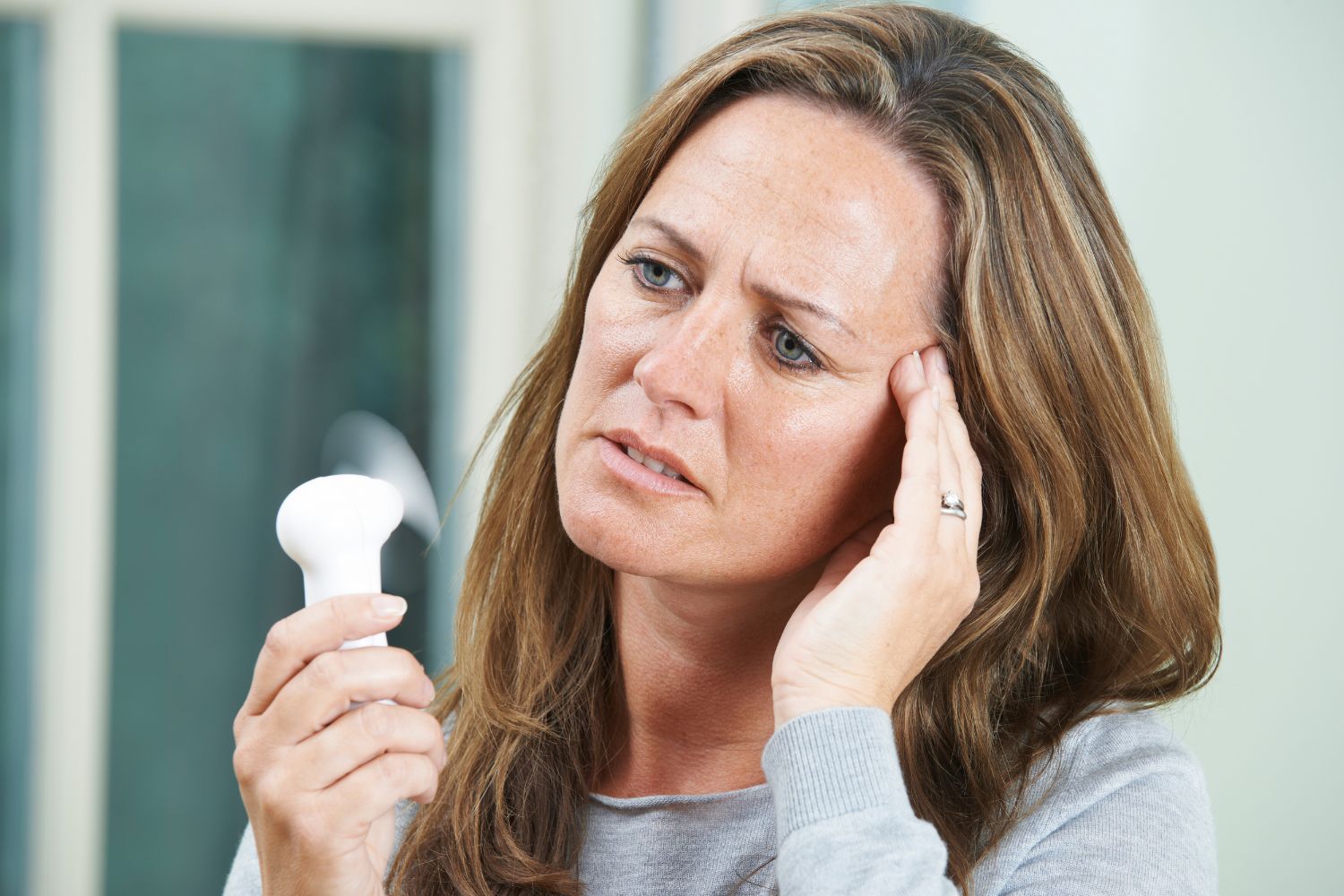Hot flushes are the splashy, big-shot symptom of perimenopause and the best-known vasomotor symptom.
They’re perhaps the first you notice and recognise as related to perimenopause, and often, the only one other people can see that you’re experiencing.
Most women get some experience of hot flushes in their perimenopause.
WATCH NOW: The truth about menopause. Article continues after video.
It can happen at the start, middle, or end of perimenopause.
It can also continue for months or years past the final period when you’re technically in menopause, also sometimes known as post-menopause.
They can be mild or ghastly, rare or happen once or 20 times a day.
Hot flushes are not imaginary or caused by a psychological reason, and most women in perimenopause will experience them.
RELATED: The low-down on the menopause diet

Getting help
If a GP says you’re too young for hot flushes without asking you a lot of questions, and tells you those symptoms are psychological or you should just put up with them because they’re to be expected, but they’re making you miserable, or uncomfortable, or you don’t want them, insist on treatment options being presented to you, or find another GP.
Right now, around the world, women are spending billions on ‘menopause’ products that will not lessen or cure their hot flushes.

Management of hot flushes
The most important thing to realise about hot flushes is that no woman has the same experience.
Everyone has their own mix of intensity and frequency of flushes, often in unpredictable ways.
It’s not run to a 28-day cycle (not that all periods are, either), and it might happen every day for a week or a month, then nothing for weeks.
Or it might just feel like it’s both unpredictable and happening all the time.
So here’s what none of us get to say to anyone else: “It’s so terrible, you have to take MHT (Menopause Hormone Therapy, previously known as HRT)” or “What’s the big deal, I hardly noticed them” or “A homeopathic treatment will cure them.” (Homeopathy can’t work because it has no active ingredients.)
If your workplace is reasonable, hot flushes can be handled with a matter-of-fact approach.
Stories abound of women in meetings or behind counters throwing off cardigans, then shirts and sitting in a singlet or T-shirt till they put it all back on again – but that won’t be possible or allowed in every workplace.
Older actresses have reported having to stop filming, flush away for a few minutes, then resume after a makeup artist sponges their faces and redoes their makeup.
Maybe pretending you’re Meryl Streep will help. I mean, it probably will in any other situation, too.

Things that can help
Riding it out: If you’re lucky, they won’t feel severe, or go on for more than a few months. But if they’re getting in your way, or awful, this may not feel like an option.
Being busy: In other words, if it doesn’t matter if you’re having a hot flush, you may not notice a milder sort of flush.
MHT: The best-known reliable treatment that works and is considered generally safe. It can take a few weeks to a couple of months to kick in. As always, women with a uterus need to take progesterone with it and it’s often not recommended for women who’ve had an experience with an estrogen-related cancer of the breast, endometrium or a history of blood clots or stroke.
Other prescribed medication: Ask a switched-on doctor, endocrinologist, gynaecologist or your oncologist. Newly developed medicines, as well as SSRI and SNRI antidepressants (serotonin and norepinephrine re-uptake inhibitors) can help with hot flushes but may not be suitable for you, so talk to your GP.
Some antidepressants: In low doses, they can reduce hot flushes and sweats. But they are also associated with a loss of libido and it can be complicated to stop taking them, so talk to your doctor.
Keeping a diary of flushes: To see if there’s a pattern, or when they feel worse. Knowing how many there are might help you decide if you can deal with them or want to get medical help.
This is an edited extract of Kaz Cooke’s It’s the Menopause: What You Need to Know in Your 40s, 50s and Beyond, $45, available from your favourite bookshop in-store and online.



